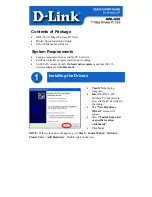
Chapter 2
Theory of Operation
2-22
©
National Instruments Corporation
output voltage range of –10 to 9.9997 V in steps of 305
µ
V for bipolar
operation.
In normal operation, a DAC output will glitch whenever it is updated
with a new value. The glitch energy differs from code to code and appears
as distortion in the frequency spectrum. Each analog output of the
PCI-MIO-16E-1, PCI-6052E, and PCI-6071E contains a reglitch circuit
that generates uniform glitch energy at every code rather than large glitches
at the major code transitions. This uniform glitch energy appears as a
multiple of the update rate in the frequency spectrum. Notice that this
reglitch circuit does not eliminate the glitches; it only makes them more
uniform in size.
The PCI-MIO-16E-1, PCI-MIO-16XE-10, PCI-6031E, PCI-6052E, and
PCI-6071E include 2 kword-deep FIFOs to buffer the analog output data.
The PCI-MIO-16E-4 has 512 word-deep FIFOs. This buffering will
increase the maximum rate that the analog output can sustain for waveform
generation. It can also be used to store a complete waveform which can be
output repetitively without any further data transfer to the FIFO. The
PCI-MIO-16XE-50, PCI-6024E, and PCI-6025E has a zero-depth virtual
FIFO.
Analog Output Timing Circuitry
This section describes the different methods of setting the analog output
voltage, including single-point updating and waveform generation. The
DAQ-STC provides the timing signals necessary to write to the DACs and
update them.
The DACs are double buffered and can be individually configured for
immediate update or timed update mode. In immediate update mode, the
double buffering of the DAC is disabled and the value written to the DAC
will appear immediately on the output after the write completes. In the
timed update mode, the double buffering is enabled. When double
buffering is enabled, writing the digital value loads that value into the buffer
stage of the DAC. When an update signal is received, the analog output of
the DAC changes.
Single-Point Output
The data values can be written directly to the DACs under software control
without the use of the timing engine provided in the DAQ-STC. This is
typically useful for setting the analog outputs to DC levels, where precise
timing of the output change is not important. Writing directly to the DACs
is accomplished by writing the desired value to the DAC<0..1> Direct Data
















































